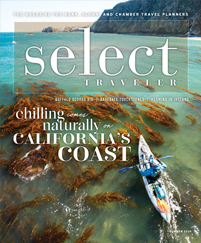From the charm of its people to the sweetness of its tea, the South has long been recognized for its unique heritage. But within these larger Southern traditions rest pockets of distinctive cultures travelers will also find well worth exploring. Offering singular music, crafts, cuisine and more, they each are so specific to their Southern homes that groups may not find their precise likeness anywhere else in the world.
Creole Culture
Louisiana
Even those well steeped in Creole culture aren’t quite sure how to define it, except perhaps by hallmarks including fabulously zippy zydeco — a mix of French accordion music and the blues — and unique fare like sweet dough pie, crawfish and turkey wings.
“I always say there are a hundred different definitions for Creole,” said Herman Fuselier, executive director of the St. Landry Parish Tourist Commission. “Creole can mean anything from a first-born generation from the Old World to descendants of slaves and free people of color.”
Fuselier recommends that motorcoach tours check out the Original Southwest Louisiana Zydeco Music Festival held the Saturday before Labor Day in his parish and Lafayette’s Festivals Acadiens et Créoles, a massive, three-day October event. Groups will also want to pay homage to Amédé Ardoin, godfather of Creole music, with a visit to his 1,500-pound, sculpted-steel statue at the St. Landry Parish Visitor Center and take in Opelousas’ Le Vieux Village Historical Park and Heritage Museum, which features one of the nation’s oldest Creole homes. In Lafayette, living-history museum Vermilionville offers costumed reenactors who portray Creole life in the 19th century.
Gullah Culture
South Carolina
Descendants of West Africans who were enslaved on the rice plantations of the southern Atlantic coast, the Gullah people boast a singular culture that retains much of its African heritage. That includes their arts and crafts — like the renowned sweetgrass baskets sold in Charleston’s City Market — that evolved from items needed for daily life across the sea as well as their music. Sung in a patois that includes languages heard in Africa, it is stunningly lovely. For groups that would like to hear Gullah music, Peach Morrison, executive director of SC Lowcountry Tourism, recommends planners hire Anita Singleton-Prather and the Gullah Kinfolk for a special performance.
Other ways for groups to explore Gullah heritage include a visit to McLeod Plantation on James Island, which offers interpretive tours through the only such site dedicated to sharing the historical perspective of the Gullah people, and Brookgreen Gardens, located south of Myrtle Beach, which features Gullah programming on Wednesdays.
Nearby Beaufort County offers additional opportunities for cultural discovery.
“There’s the Penn Center,” Morrison said. “It was originally a school set up before the Civil War was over to teach contraband: They weren’t slaves, but they weren’t free yet. There’s a museum there that groups can visit.”
Appalachian Culture
Tennessee
Ever listen to country music? Take a sip of moonshine? Then you’re experiencing the by-products of Appalachian culture, which dates to the 18th century, when Irish settlers began immigrating to places like east Tennessee. With them came fiddle music; step dancing, a precursor to Appalachian clogging; and crafts such as pottery.
“To me, it’s the crafts that today define the culture,” said Stephanie Wells, director of tourism for Anderson County, Tennessee. “Though I use the word crafts loosely because, back then, they used what they made. They slept under quilts; they didn’t hang them on the wall like we do.”
There are many attractions in Tennessee that pay homage to Appalachian mountain culture, from Pigeon Forge’s Dollywood, which offers demonstrations of old-time trades including blacksmithing to Cades Cove in Great Smoky Mountains National Park, with a variety of historic Appalachian buildings. Groups will also want to visit the Museum of Appalachia in Clinton. A living farm, it gives groups the opportunity to have an authentic mountain dinner on-site with entertainment from the Museum of Appalachia Band. Across from the museum, the Appalachian Arts Craft Center offers group classes as well as a shop filled with handmade goods.
Delta Culture
Mississippi
A melange of heritages and peoples, including Black, Chinese, Jewish and Hispanic, the Mississippi Delta can’t really be explained, according to Karen Matlock, domestic group tour program manager for Visit Mississippi.
“It’s the Delta mystique,” Matlock said. “That’s what we call it. It’s the land, it’s the people, it’s the entire culture, because you had such an influx of different, diverse groups living in the Delta. So it just became this place of mystery. You have to visit the Delta and absorb it to understand it.”
Groups wishing to unravel the Delta mystique might begin by submerging themselves in the blues — the American musical genre from which all others spring — at beloved juke joints in Clarksdale like Ground Zero and Red’s. Groups can also explore the area that birthed the blues at institutions such as the Delta Blues Museum in Clarksdale, Indianola’s B.B. King Museum and Delta Interpretive Center, and the Gateway to the Blues Museum in Tunica. Afterward, Matlock suggests visitors head to Greenville to fuel up at Doe’s Eat Place, which serves another distinctive Delta goodie: extra spicy tamales, made with cornmeal rather than corn flour.
Irish Culture
Savannah, Georgia
Sure, big cities like Boston are recognized for having prominent populations of people that hail from the Emerald Isle. But did you know that Savannah has its own contingent of Irish Americans? The emigration from Ireland to Savannah, which started as a trickle in the 1700s, became a flood in the mid-19th century, according to Jeff Hewitt, senior vice president of Visit Savannah.
“One of the primary reasons people came over was the famine,” Hewitt said. “And they ended up here because of our temperate climate.”
The Irish brought with them a culture steeped in the love of music, a great pint and “craic,” an Irish word loosely meaning “lively conversation and a fun time.” That’s exactly what groups get when they visit Savannah for the city’s legendary St. Patrick’s Day celebration, which begins with a blessing at the Cathedral Basilica of St. John the Baptist and continues with a four-hour parade. For those who don’t want to join the revelers, the city offers plenty of other Irish-related activities year-round, from taking Savannah Tours and Tales’ Irish Walking Tour to visiting Emmet Park’s Celtic Cross and shopping at Saints and Shamrocks.
Spanish Culture
St. Augustine, Florida
The nation’s oldest city, St. Augustine, Florida, was settled by the Spanish in 1565 and still bears evidence of this history in its architecture, food and museums. Attractions that give visitors a chance to explore the city’s roots include Aviles Street, which dates back to the 16th century and is now home to the Spanish Military Hospital Museum, and the González-Alvarez House, the oldest Spanish colonial home in the city. Groups also won’t want to miss the Colonial Quarter, a two-acre living-history museum offering the Spanish eatery Taberna de Caballo.
St. Augustine’s oldest structure, the fort Castillo de San Marcos, dates to 1695 and makes a particularly great stop for groups, said Barbara Golden, communications manager at the St. Augustine, Ponte Vedra and the Beaches Visitor and Convention Bureau.
“Group can take a guided tour, and they have interpretive programs,” she said. “There’s so much to learn about Spanish colonial life, the Spanish military, the city of St. Augustine and Spain in the New World, so they do a fantastic job of interpreting that for visitors.”









